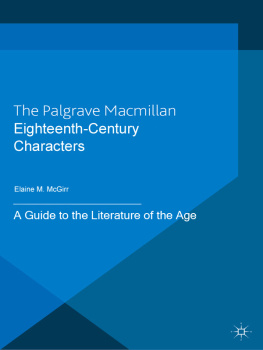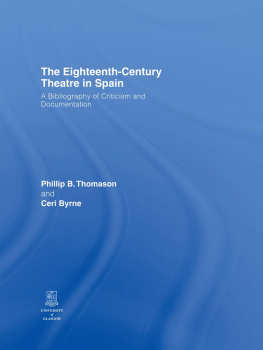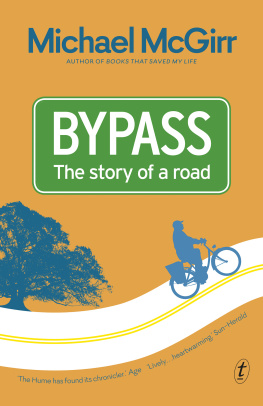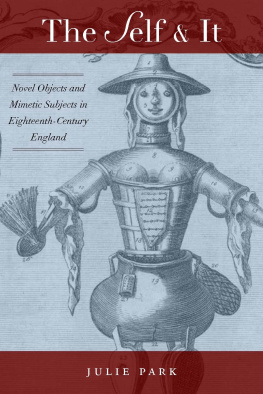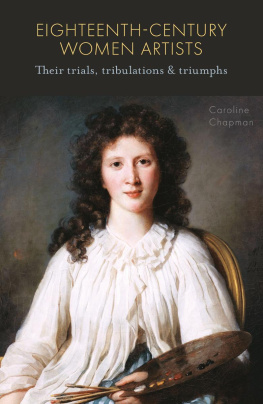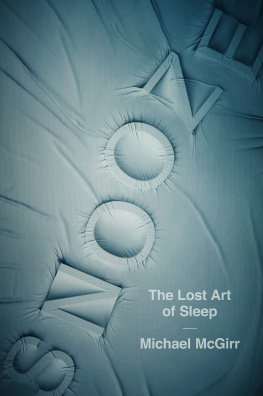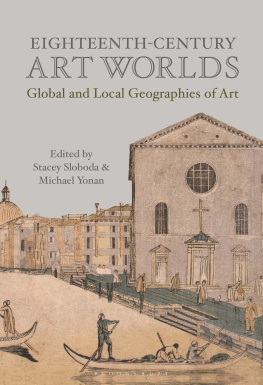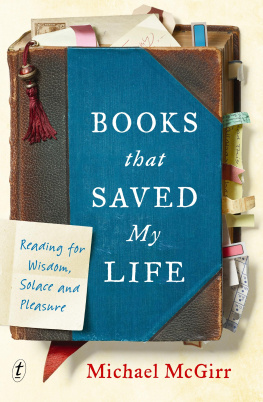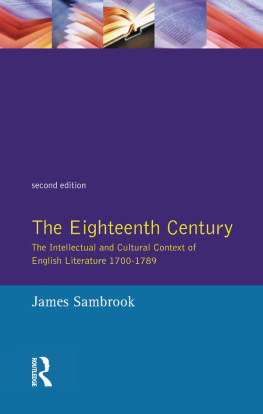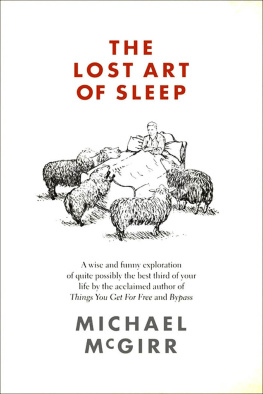E. Mcgirr - Eighteenth-Century Characters
Here you can read online E. Mcgirr - Eighteenth-Century Characters full text of the book (entire story) in english for free. Download pdf and epub, get meaning, cover and reviews about this ebook. year: 2007, publisher: Macmillan Education UK, genre: Romance novel. Description of the work, (preface) as well as reviews are available. Best literature library LitArk.com created for fans of good reading and offers a wide selection of genres:
Romance novel
Science fiction
Adventure
Detective
Science
History
Home and family
Prose
Art
Politics
Computer
Non-fiction
Religion
Business
Children
Humor
Choose a favorite category and find really read worthwhile books. Enjoy immersion in the world of imagination, feel the emotions of the characters or learn something new for yourself, make an fascinating discovery.
- Book:Eighteenth-Century Characters
- Author:
- Publisher:Macmillan Education UK
- Genre:
- Year:2007
- Rating:3 / 5
- Favourites:Add to favourites
- Your mark:
- 60
- 1
- 2
- 3
- 4
- 5
Eighteenth-Century Characters: summary, description and annotation
We offer to read an annotation, description, summary or preface (depends on what the author of the book "Eighteenth-Century Characters" wrote himself). If you haven't found the necessary information about the book — write in the comments, we will try to find it.
Eighteenth-Century Characters — read online for free the complete book (whole text) full work
Below is the text of the book, divided by pages. System saving the place of the last page read, allows you to conveniently read the book "Eighteenth-Century Characters" online for free, without having to search again every time where you left off. Put a bookmark, and you can go to the page where you finished reading at any time.
Font size:
Interval:
Bookmark:
EIGHTEENTH-CENTURY CHARACTERS
Related titles from Palgrave Macmillan
Jennie Batchelor, Dress, Distress and Desire
Stephen H. Gregg (ed.), Empire and Identity: An Eighteenth-Century Sourcebook
Brean Hammond and Shaun Regan, Making the Novel: Fiction and Society in Britain, 16601789
Moyra Haslett, Pope to Burney, 17141779
Juliet McMaster, Reading the Body in the Eighteenth-Century Novel
John Skinner, An Introduction to Eighteenth-Century Fiction
Andrew Varney, Eighteenth-Century Writers in their World
A Guide to the Literature of the Age
Elaine M. McGirr


Elaine M. McGirr 2007
All rights reserved. No reproduction, copy or transmission of this publication may be made without written permission.
No paragraph of this publication may be reproduced, copied or transmitted save with written permission or in accordance with the provisions of the Copyright, Designs and Patents Act 1988, or under the terms of any licence permitting limited copying issued by the Copyright Licensing Agency, 90 Tottenham Court Road, London W1T 4LP.
Any person who does any unauthorized act in relation to this publication may be liable to criminal prosecution and civil claims for damages.
The author has asserted her right to be identified as the author of this work in accordance with the Copyright, Designs and Patents Act 1988.
First published 2007 by
PALGRAVE MACMILLAN
Houndmills, Basingstoke, Hampshire RG21 6XS and
175 Fifth Avenue, New York, N. Y. 10010
Companies and representatives throughout the world
PALGRAVE MACMILLAN is the global academic imprint of the Palgrave Macmillan division of St. Martins Press, LLC and of Palgrave Macmillan Ltd. Macmillan is a registered trademark in the United States, United Kingdom and other countries. Palgrave is a registered trademark in the European Union and other countries.
ISBN-13: 9781403985576 hardback
ISBN-10: 140398557X hardback
ISBN-13: 9781403985583 paperback
ISBN-10: 1403985588 paperback
This book is printed on paper suitable for recycling and made from fully managed and sustained forest sources.
A catalogue record for this book is available from the British Library.
A catalogue record for this book is available from the Library of Congress.
10 9 8 7 6 5 4 3 2 1
16 15 14 13 12 11 10 09 08 07
Printed in China
In memory of my father
The term character is a vexed one, particularly when applied to eighteenth-century literature. At the beginning of the century, the term was primarily used to signify the external marks or signs by which something could be recognised (e.g. the characters of the alphabet). Over the course of the century, an additional meaning of the term came into use: the estimate formed of a persons moral qualities. Experience seemed more likely to expose a disjunction rather than a correlation between the physical and the moral: eighteenth-century life and literature is full of bad hearts masked by good faces. In many ways, the eighteenth century is defined by the always-present possibility of this divergence between being and seeming and the overwhelming desire to close that gap, to make appearances unambiguously signify natures. At different points in the long eighteenth century, different aspects of this tension would predominate. The Restoration period is marked by moral and political anxieties about feigning and hypocrisy, the putting on of ideas and identities. At the other end of the century, the Romantic movement tended to highlight the increasing artifice of society and its seeming divorce from nature.
The individual character Mr. Rakewell or Miss Friendly stands in for a class, he or she is representative rather than psychologically realised. The character is an attempt to define social and moral types, suggesting that despite the idiosyncrasies of a Sir Clumsy Tunbelly, he is still a clear type the country gentleman and is thus easily read and understood. Characters hold out the promise of making humanity knowable, or at least recognisable in hindsight.
The character sketch was not new to the eighteenth century the genre had been around since Theophrastus published his Characters c. 319 BCE. Characters are short, usually prose, sketches of fictional but typical individuals. The original Theophrastan characters were all of foolish or vicious types, and while later character books added virtuous characters, this emphasis on negative types remained. For instance, the popular Characters of Virtues and Vices, first published in 1605, consisted of two books, the first with nine virtues (eleven in later editions), the second with fifteen vices. The character sketch included both classes of people lawyers, soldiers, priests and types lovers, drunkards, youths. While often humorous and playful, the character is a didactic genre at heart: it teaches readers how to recognise and value different types of people, from lawyers to drunkards. In describing the good man or identifying hypocrisy as one of the defining characteristics of the courtier, the character sketch is clearly evaluating while describing. This twin role taught contemporary readers what to think of their neighbours and themselves. It also teaches modern readers how to read the society that produced the character sketch. That one society portrays the Soldier as a glorious hero while another makes him a cowardly braggart or blood-thirsty savage tells us a lot about the values of each.
But while it was not new, character writing developed into something of a craze in seventeenth- and eighteenth-century England, starting with Joseph Halls Characters of Virtues and Vices. Characters became so popular that one Restoration wit published a students guide for writing them:
1. Chuse a Subject, viz. such a sort of men as will admit a variety of observation, such be, drunkards, usurers, lyars, taylors, excise-men, travellers, pedlars, merchants, tapsters, lawyers, and upstart gentleman, a young Justice, a Constable, an Alderman, and the like.
2. Express their natures, qualities, conditions, practices, tools, desires, aims or ends, by witty Allegories, or Allusions, to things or terms in nature, or art, of like nature and resemblance, still striving for wit and pleasantness, together with tart nipping jokes about their vices or miscarriages.
3. Conclude with some witty and neat passage, leaving them to the effect of their follies or studies.
As the craze for characters developed, so did the genre. Seventeenth-and eighteenth-century English authors scoured classical and Continental sources in their attempts to collate the definitive character book. In addition to the original Theophrastan characters, writers turned to Horace and Roman verse satire, to Seneca and Cicero, and to La Bruyre and La Rouchfoucauld. Character books were a kind of miscellany of humanity: they captured the known world, making it transparent and readable in the process. Characters also left the sketch book and found their way into sermons, periodicals, drama, novels and poetry: the character permeated eighteenth-century literature.
The eighteenth-century character, with its insistence that external description could delineate the inner man, was used to bridge the two meanings of character and try to blur the boundaries between physical and moral qualities. The application of typography is in large part an attempt to match internal and external characteristics: the drunkards red nose signified his moral weakness for liquor. By mapping moral qualities on to superficial signs, characters were rendered transparent and the gap between seeming and being was overcome. But at the same time, character sketches also served as warnings that this very gap did, in fact, exist; many characters are defined by a disjunction between their attractive exteriors and their moral failings or by feigned exteriors that masked the deformity of their souls. For instance, the coquettes beauty was not a true reflection of her spotless heart, but was often shown to be augmented by cosmetics and/or at odds with a selfish, vain or shrewish moral character. Beautiful girls with good hearts were also always shown not to be coquettes but only innocently vivacious. The coquette is thus defined by a face at odds with her heart. By exposing and delineating this divergence between appearance and essence, the character sketch actually demonstrated how the two meanings of character could still be proven to be congruent, for they taught readers how to decode potentially deceptive signs and therefore to read moral characters properly.
Next pageFont size:
Interval:
Bookmark:
Similar books «Eighteenth-Century Characters»
Look at similar books to Eighteenth-Century Characters. We have selected literature similar in name and meaning in the hope of providing readers with more options to find new, interesting, not yet read works.
Discussion, reviews of the book Eighteenth-Century Characters and just readers' own opinions. Leave your comments, write what you think about the work, its meaning or the main characters. Specify what exactly you liked and what you didn't like, and why you think so.

